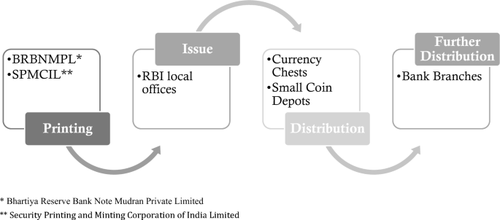Journal of Quantitative Economics Pub Date : 2024-04-23 , DOI: 10.1007/s40953-024-00390-1 Anirudh Tagat , Mehmet Özmen , Gregory Markowsky

|
India’s currency-to-GDP ratio indicates a strong and persistent demand for cash. Despite the withdrawal of two high-value banknotes in 2016 and the recent economic contraction due to the COVID-19 pandemic, cash continues to rule in India. Although there is extensive work on the demand for cash in India, relatively little is known about the quality and supply of banknotes. This paper provides an overview of currency management policies in India using publicly available annual aggregate issuances and disposals data from the Reserve Bank of India (RBI). We model the life of a banknote using survival analysis models, finding that low-value banknotes (INR 10 and 20) have a median life of 4–5 years. The estimates of longevity of a banknote are significantly associated with velocity of circulation as well as exogenous shocks. We demonstrate the value of survival analysis methods in informing currency management policies in India and providing avenues for future work in this domain.
中文翻译:

印度的纸币寿命:生存分析方法
印度的货币与国内生产总值的比率表明对现金的强劲且持续的需求。尽管 2016 年撤回了两种高面值纸币,并且最近因 COVID-19 大流行而导致经济萎缩,但现金仍然在印度占据主导地位。尽管对印度的现金需求进行了大量研究,但对纸币的质量和供应知之甚少。本文利用印度储备银行 (RBI) 公开的年度发行总量和处置数据,概述了印度的货币管理政策。我们使用生存分析模型对纸币的寿命进行建模,发现低面值纸币(10 和 20 印度卢比)的中位寿命为 4-5 年。对纸币寿命的估计与流通速度以及外源冲击显着相关。我们展示了生存分析方法在为印度货币管理政策提供信息并为该领域的未来工作提供途径方面的价值。



























 京公网安备 11010802027423号
京公网安备 11010802027423号